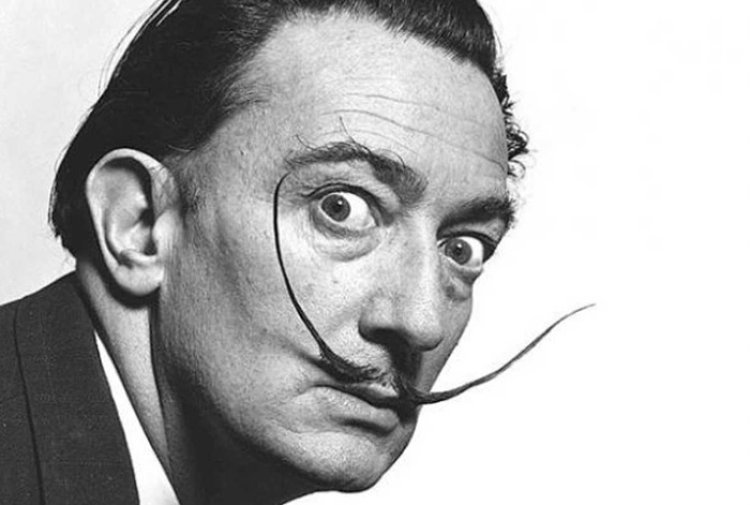Salvador Dali and his surrealism
Salvador Dali and his surrealism - Among these we certainly find Salvador Dalì (1904-1989), with the iconic image of him: the mustache trimmed with the tips turned up, the eccentric elegance.

Few artists manage to remain impressed in the history of art both for their works and for the character they have been able to embody.
Among these we certainly find Salvador Dalì (1904-1989), with the iconic image of him: the mustache trimmed with the tips turned up, the eccentric elegance.
A look that seemed to be a direct expression of the artist's style: unsettling, without equal.
Dalì was born into a wealthy family in Catalonia and soon manifested a vocation for art, which led him to undertake studies in the sector.
In 1919 it held its first exhibition. Above all, his mother, Felipa Doménech I Ferres encouraged the boy's creative aptitude; when this she died prematurely due to a tumor, in 1921, Salvador entered a phase of great crisis, which influenced his restless character.
At the Academy of Fine Arts he soon made himself known for his unusual clothing (jackets and knickerbockers) and for the first hints of a particular pictorial style, which in part evoked Cubism. From the same Academy he was expelled in 1923, accused of having organized a protest that had required the intervention of the Police.
Paris and the encounter with surrealism
Dali he did not abandon his creative vocation: he went to Paris, met Picasso, joined the surrealist movement.
This artistic and literary current set out to explore the innermost mental associations of the psyche, the hidden thoughts, representing them with a style that completely abandoned any realism.
Dalì approached Surrealism with the method he called "critical paranoid", an attempt to explore his own unconscious and transpose his impressions onto the canvas.
Thus, in his painting unusual associations of ideas and images give life to surreal and alienating compositions, with a disturbing charm.
From fears about the passage of time, for example, one of his most famous works was born, "The Persistence of Memory" of 1932, with clocks with strangely "soft" shapes that stand out in a marine landscape.
In "Dream caused by the flight of a bee around a pomegranate a moment before waking up" (1944) the artist reworks what was told by his partner Gala, disturbed by the buzzing of a bee while sleeping.
The image of a sleeping woman is accompanied by the surreal apparition of two tigers emerging from the jaws of a fish, which in turn emerged from a giant pomegranate.
A bayonet close to the woman's body perhaps evokes the fear of a bee sting. The figures are always outlined in the smallest details, in a paradoxical "realism of the unreal".
Surrealism was also influenced by Sigmund Freud's theories on the unconscious, but Dalì's works do not always lend themselves to symbolic analysis: sometimes it is precisely the free, irrational association of elements, outside the schemes of meaning, that inspires the artist.
Dalì was dismissed from the other surrealists with the accusation of not assuming a clear political position, in a predominantly left-wing artistic context.
One of the main exponents of the current, André Breton, accused him of materialism and coined a perfidious anagram of his name: Avida Dollars.
Nonetheless, Dalì continued to reaffirm his belonging to the movement: "Surrealism is me", he even declared.
And historical-political events, in reality, influenced his art on some occasions: in "Soft construction with boiled beans: premonition of civil war", for example, a surreal, monstrous figure seems to be fighting with itself; perhaps a symbol of a nation, Spain, which six months later would indeed descend into bloody conflict.
However, the artist never expressed a condemnation of Francoism: a further reason for distancing himself from the surrealist community.
Beyond the political controversies, we still remember Dalì's great creativity, which extended to other areas in addition to painting: in fact he collaborated with Walt Disney, with the stylists Elsa Schiaparelli and Christian Dior designing futuristic clothes, he had experiences in the theater, in the cinema , in design.
We recall, for example, the "lobster telephone" commissioned by the patron Edward James, with the handset shaped like a crustacean, for Dalì a symbol with a sexual connotation.
And sensuality also dominates another creation of hers, the "lip sofa by Mae West", a tribute to the famous actress.

















